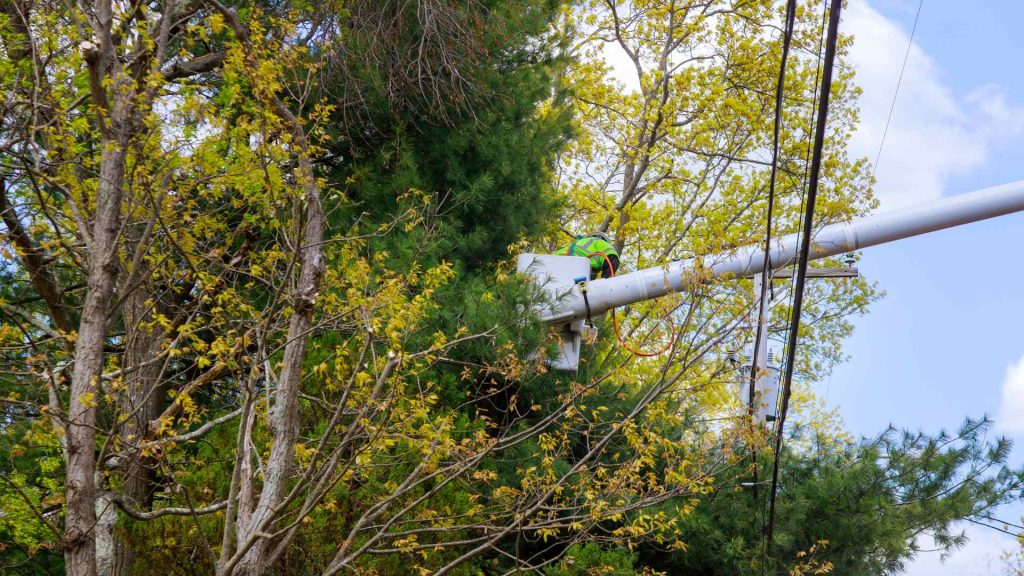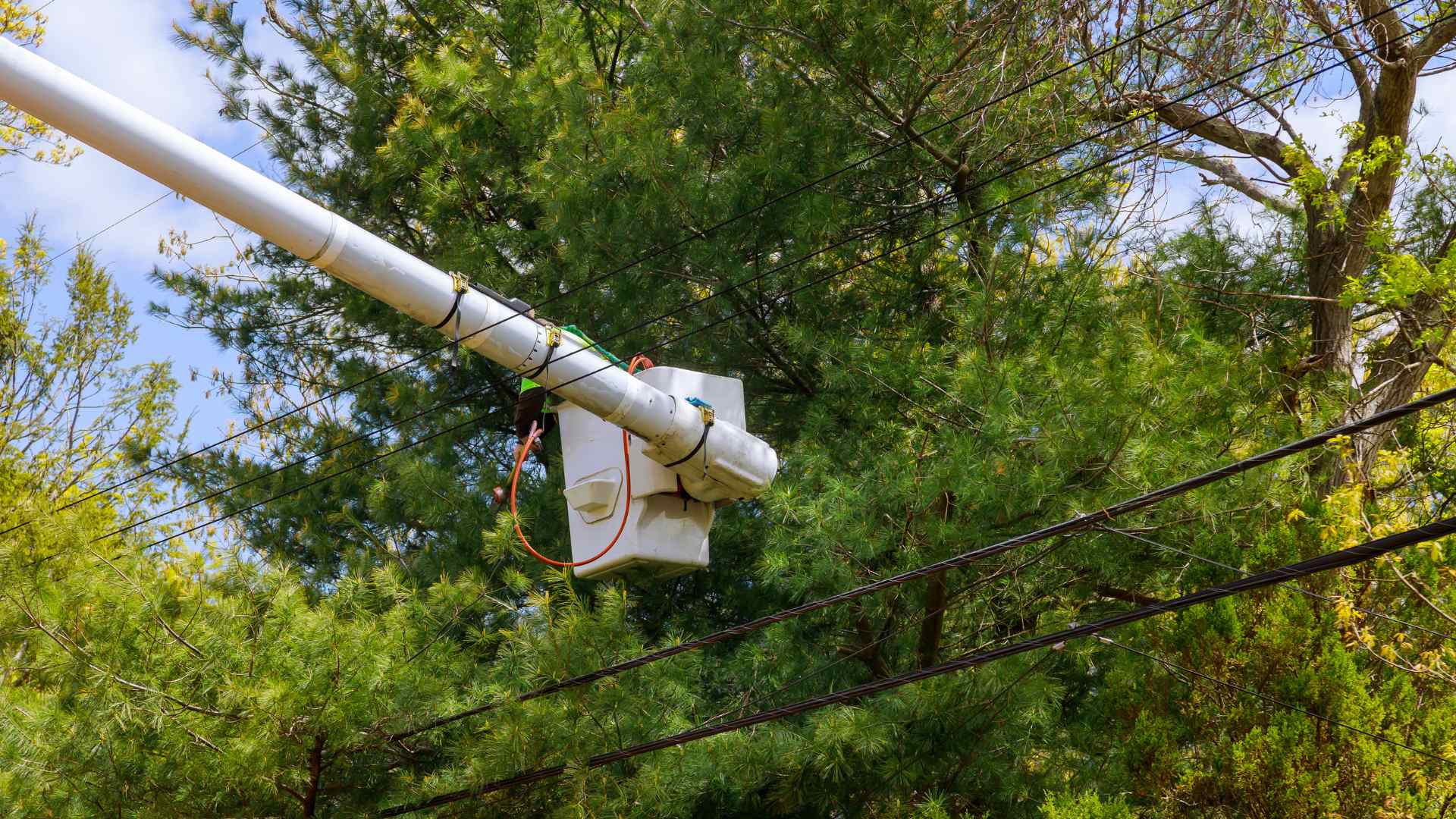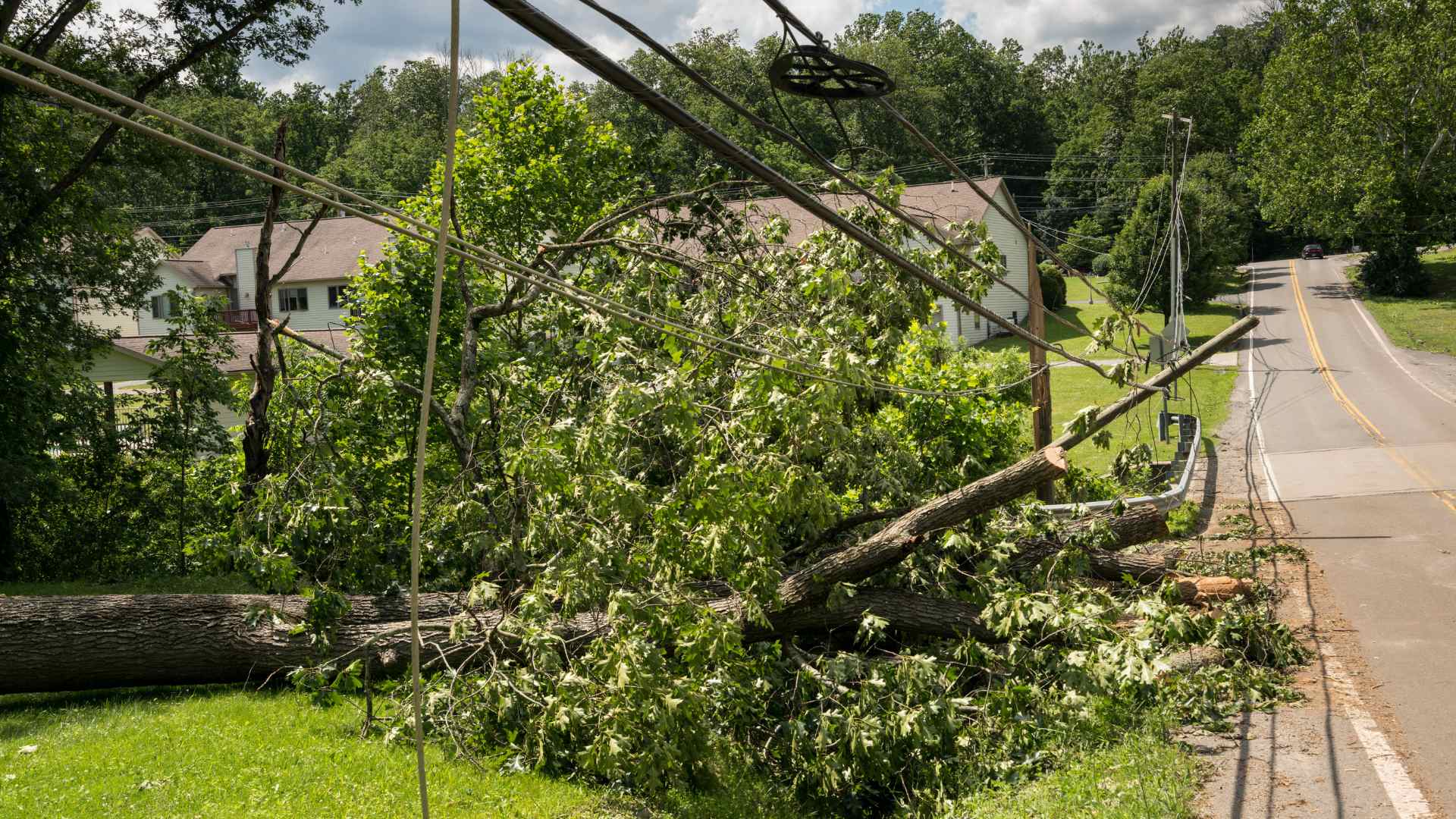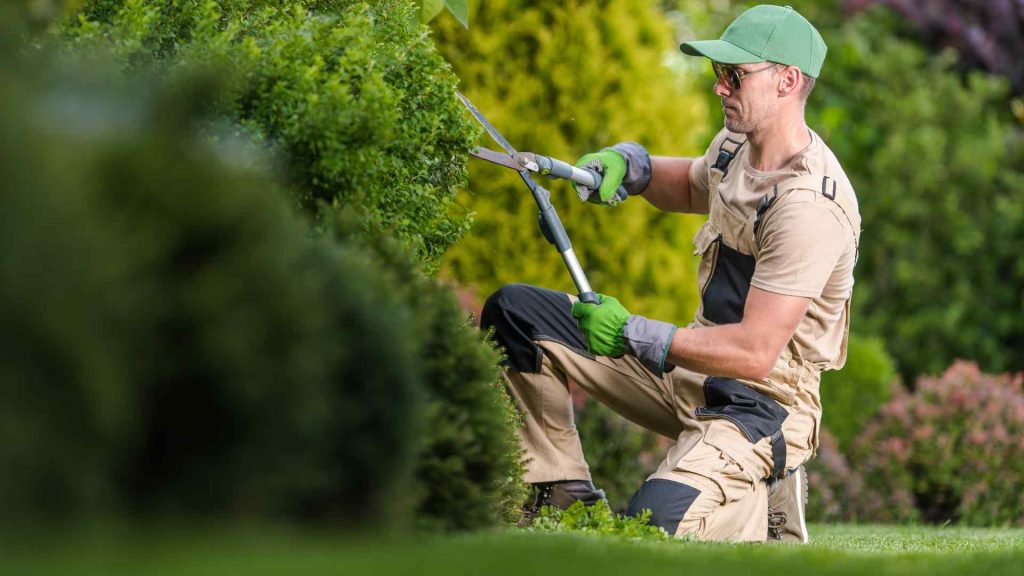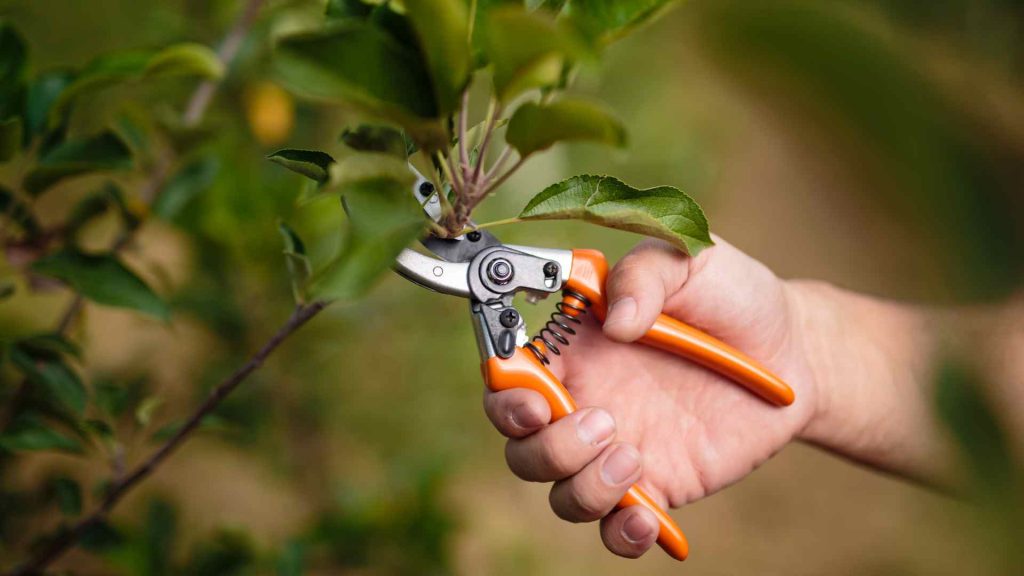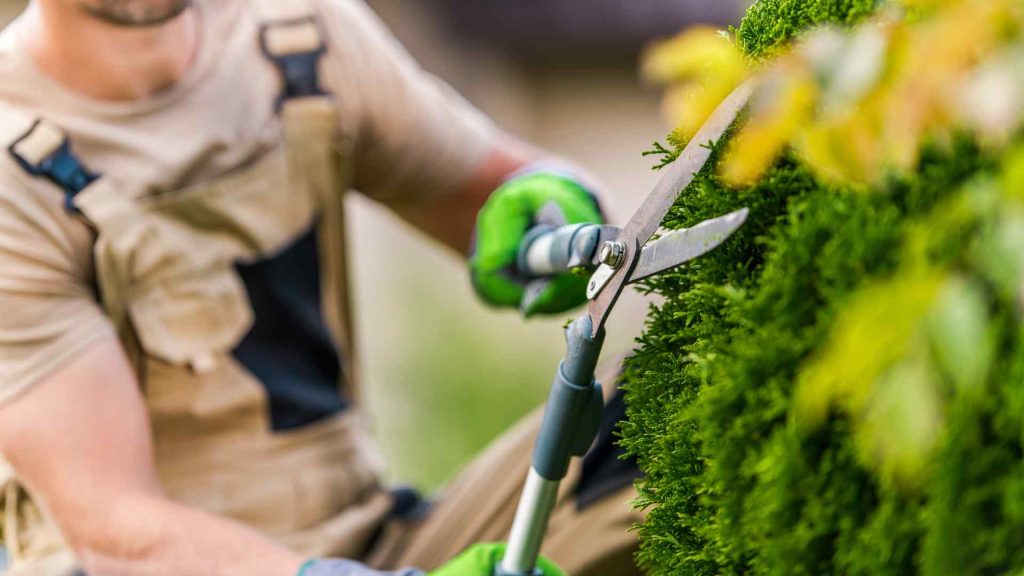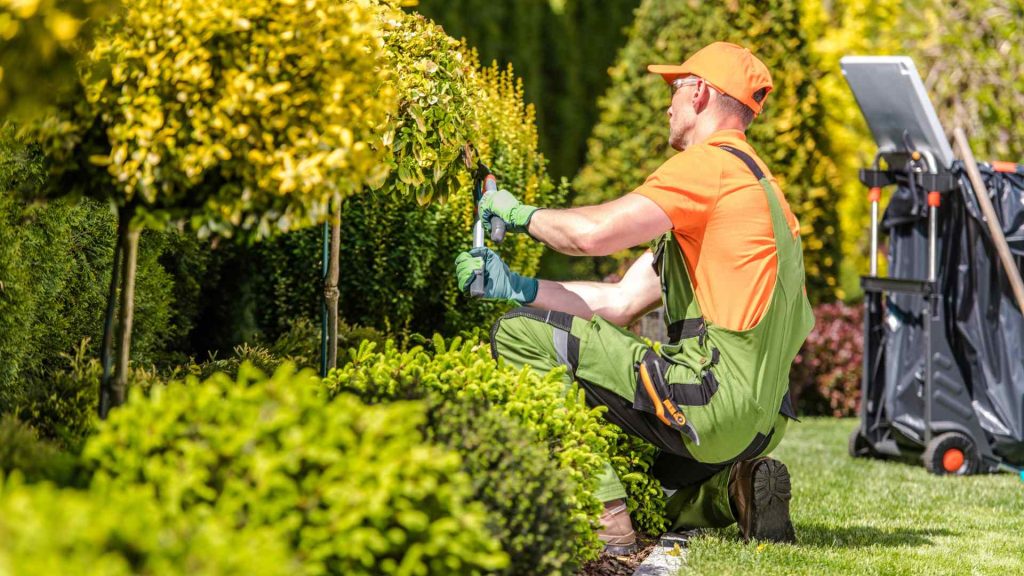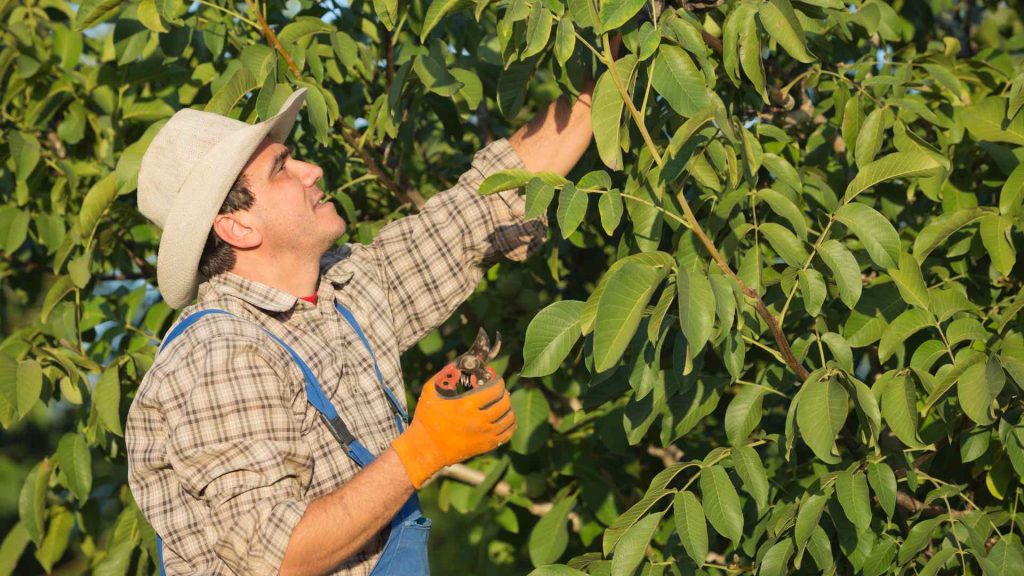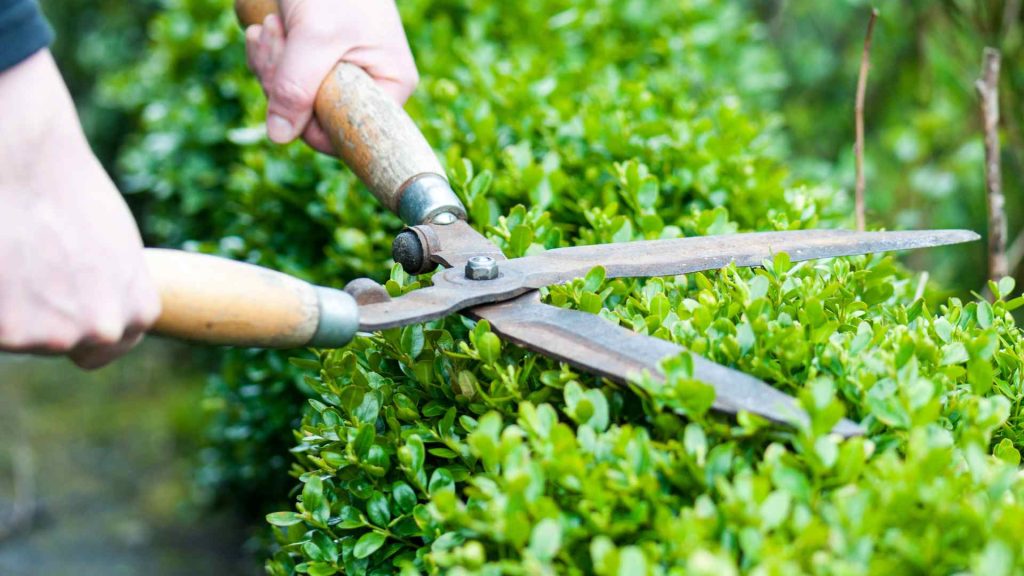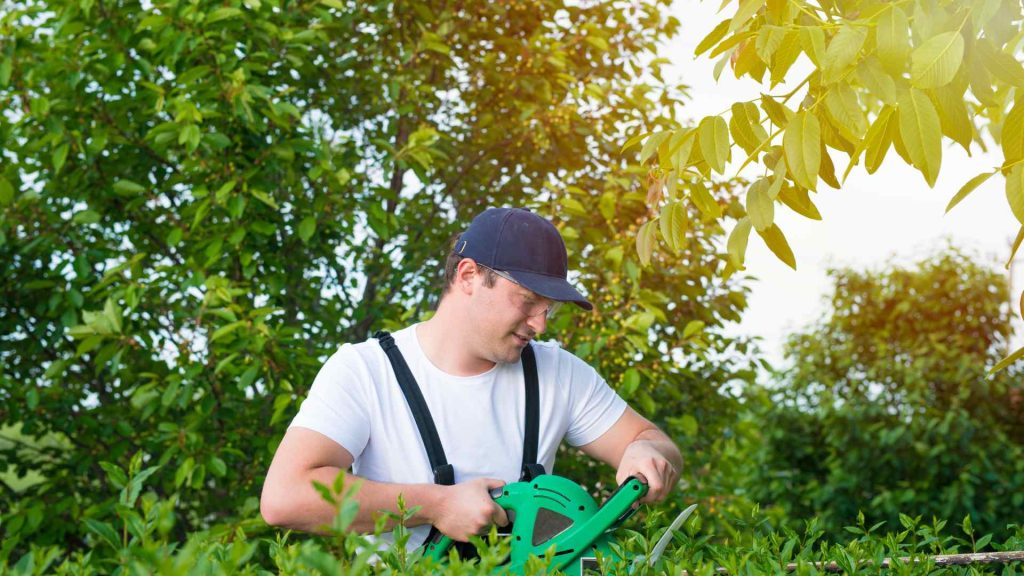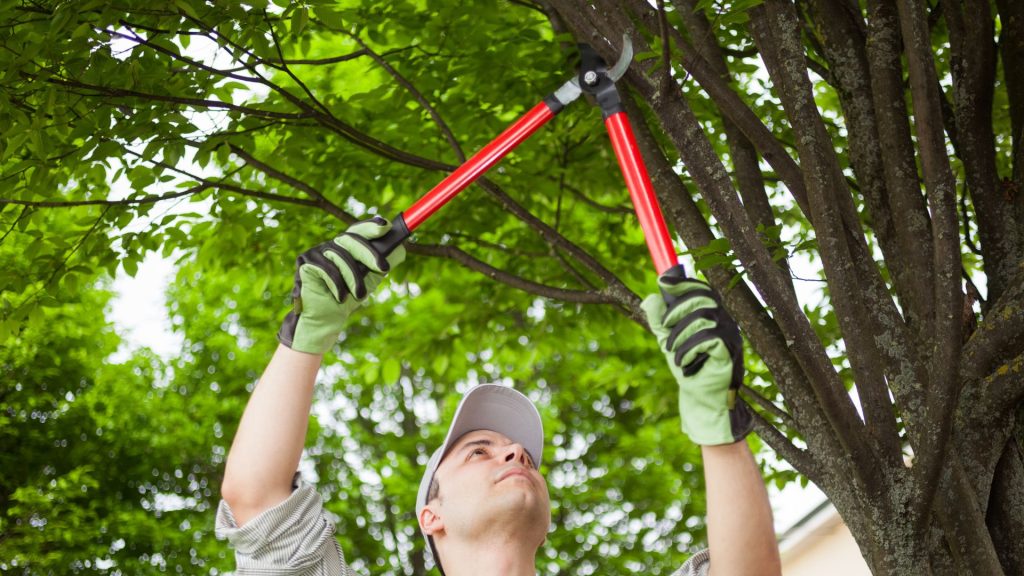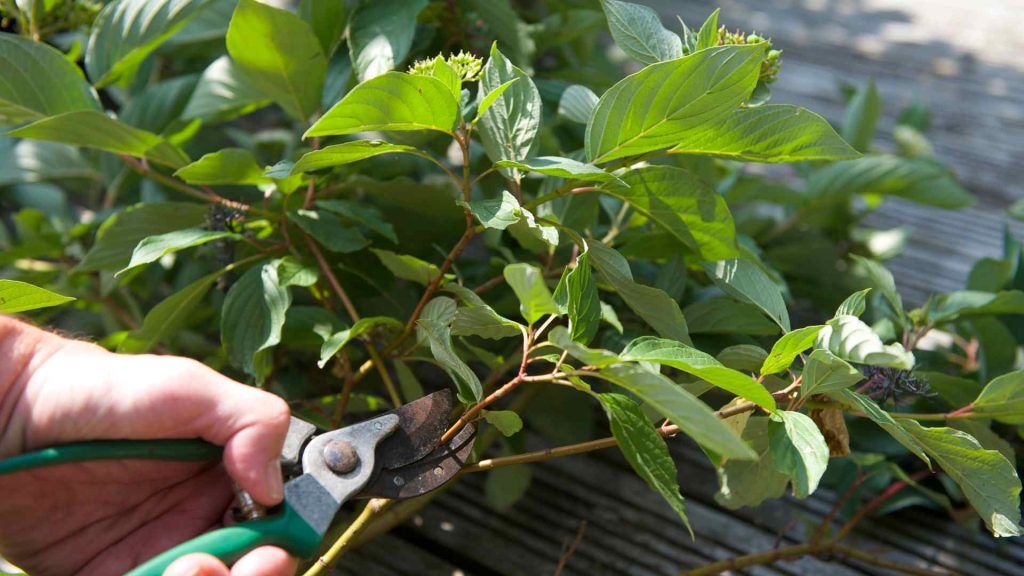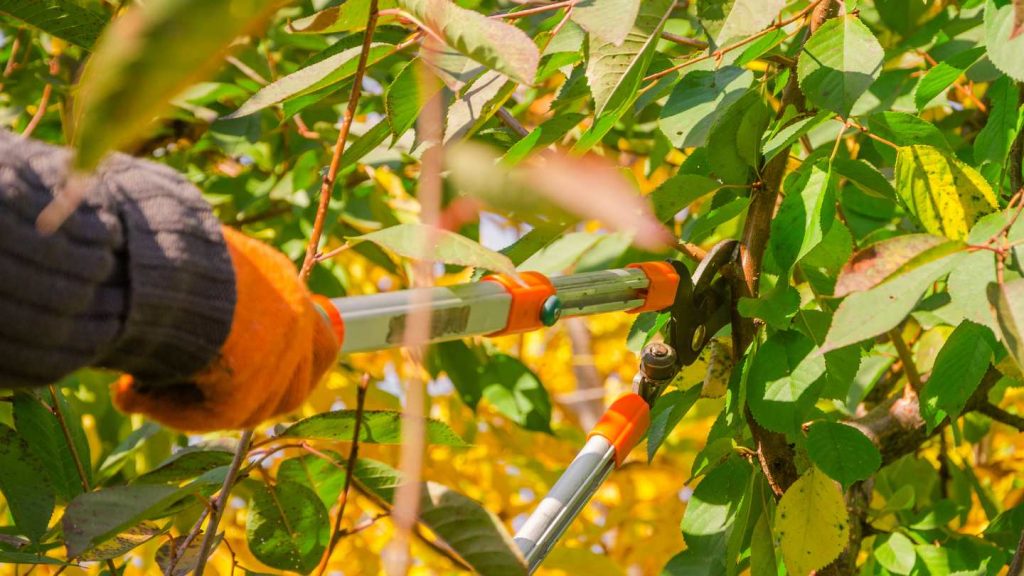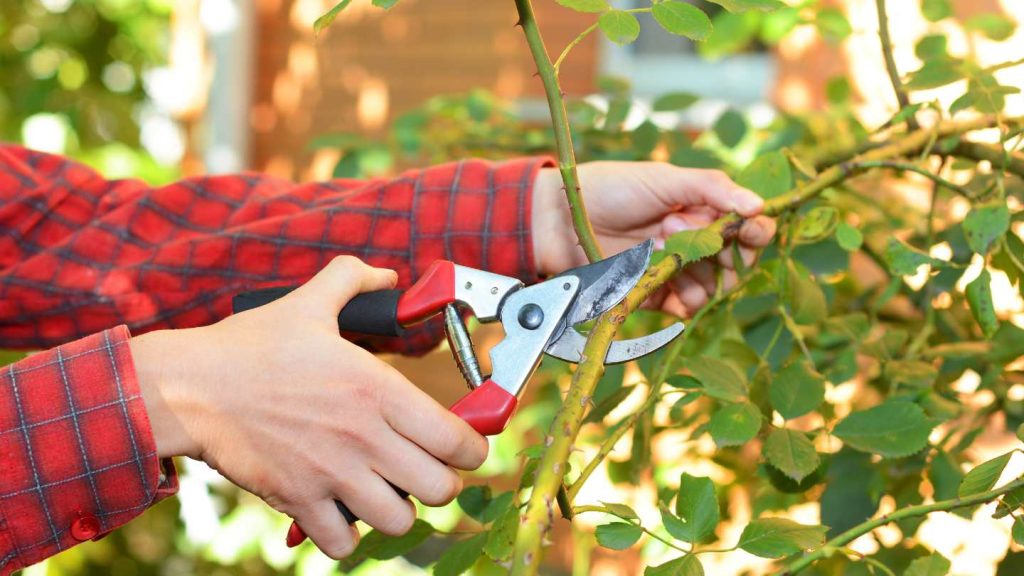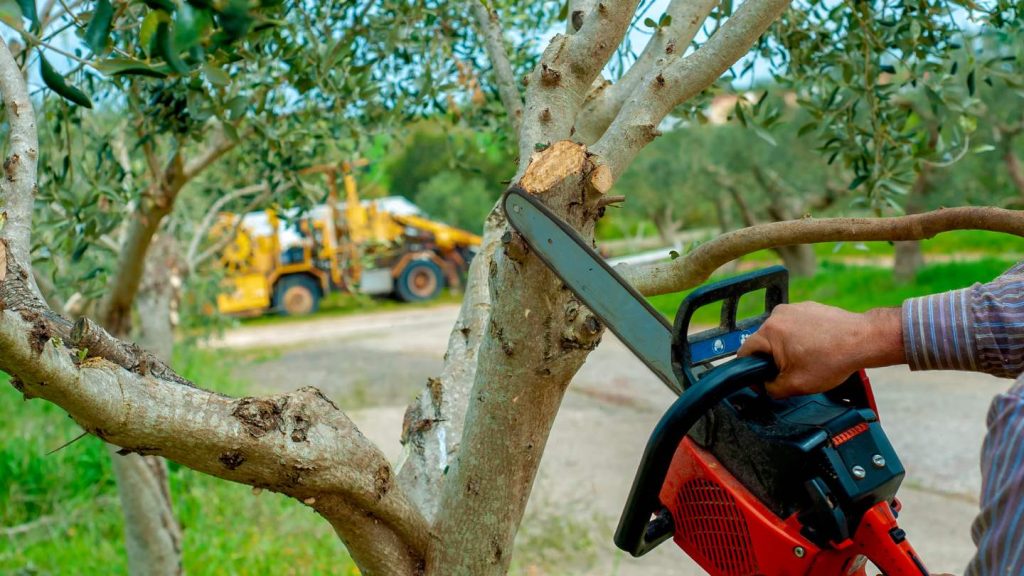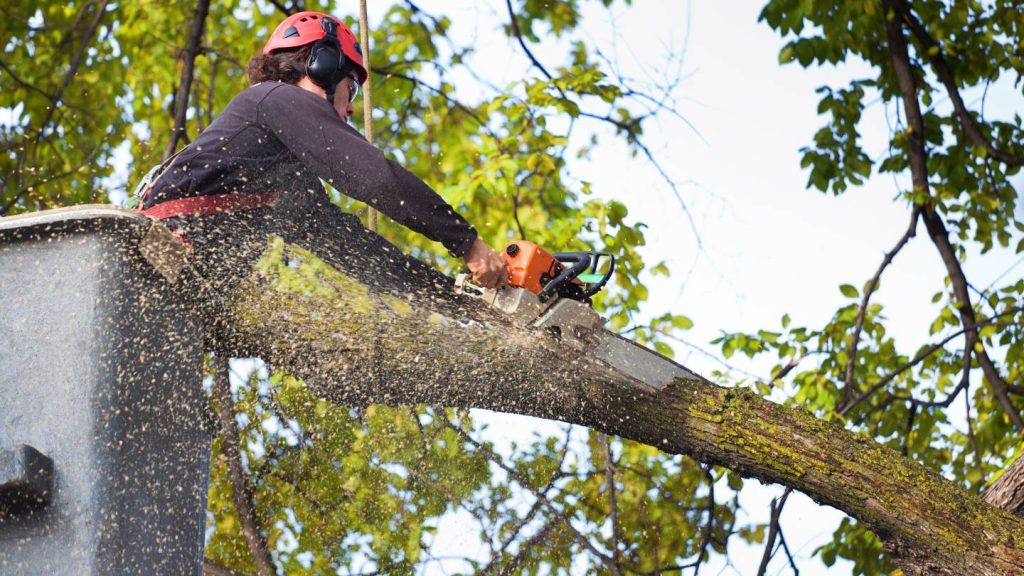Trees near electricity lines can be a beautiful sight, but they can also present a particular difficulty for homeowners and tree service professionals. It takes great thinking and experience to strike a balance between the need to preserve nature's beauty and the necessity of assuring safety and an uninterrupted power supply. Pruning trees close to electricity lines is a dangerous and intricate job that requires expert skill and understanding. In this all-encompassing manual, we dissect every facet of that procedure. We go into a plethora of material meant to equip both homeowners and tree care experts, from comprehending the regulatory guidelines established by utility companies to applying advanced pruning procedures. Pruning trees close to power lines can be done securely with the help of these guidelines, helping to maintain a balance between urban and natural environments.
Pruning trees close to power lines can be difficult because of the maze of rules and regulations set up by utility companies and municipal governments. It is critical to be aware of the legal clearance distances and the allowed methods that can be used in such situations. The safety of utility workers is paramount, but complying with these requirements also reduces power outages and other hazards during storms. This portion of the guide provides a comprehensive overview of the legal aspects, giving readers the knowledge and assurance they need to prune trees near power lines safely and in accordance with applicable regulations.
Pruning trees near electricity lines requires careful planning and execution. Professional arborists use techniques like directional pruning and crown reduction to keep trees healthy and structurally sound while keeping them away from power wires. The dangers of trees growing close to electrical lines can be reduced with the correct preparation and equipment. This manual goes deeply into the nuances of these methods, providing useful insights and professional advice. With this information in hand, homeowners and tree care experts may prune trees near power lines with confidence and accuracy, creating a mutually beneficial interaction between urban landscapes and critical infrastructure.
Planting The Right Tree In The Right Place
Spring is a popular time for planting trees, especially around Earth Day and National Arbour Day. Planting new trees has numerous positive effects on the ecology and the aesthetic quality of a neighbourhood. But Safe Electricity wants to stress the importance of being cautious around live wires this planting season. If you want to plant trees or shrubs, it's best to get some expert advice first.
Overgrown trees near power lines pose a fire and shock threat and disrupt service. What's more, kids who climb trees that are too close to power lines risk getting shocked if they touch the wires. Those cutting branches or hanging lights near trees that have grown onto electricity lines run the risk of being electrocuted. According to Erin Hollinshead, executive director of Safe Electricity, "trees provide many aesthetic, environmental, and economic benefits." However, before commencing any landscaping job, it is imperative that you contact the utility or a utility locator service to avoid any potential hazards caused by trees growing onto electricity lines.
Consult a local arborist, tree nursery, or utility to learn more about tree options in your area. These professionals can help you plan a yard that maximises shade and aesthetic appeal by strategically placing trees. Trees provide a cost-effective means of cooling in the summer and a windbreak in the winter. Carbon dioxide (CO2) is a major contributor to air pollution, although trees help mitigate its effects by sucking it up. Trees use solar energy to fuel their growth, which they then use to produce sugar from CO2 in the air. As a result, trees are an inherently effective "carbon sink" or live means of reducing atmospheric carbon levels. The U.S. Department of Energy (DOE) states that fast-growing, long-lived tree species are the best at acting as carbon sinks, though this is not universally true.
When it comes to overhead power lines, picking the correct tree for the job is of the utmost importance. Growing trees or any other type of wood too close to power lines is dangerous because of the possibility of electrical current being conducted through the material. When branches make contact with electrical wires, it can cause either a permanent blackout or a temporary stoppage in service. A wire touching a neighbouring branch can also create an arc and ignite a fire.
When shopping for trees to plant this year, "keep in mind expected height," Hollinshead advised. A tree's current distance from a power line is no guarantee that it will remain so in the future. Trees that are growing too close to electrical lines should be reported to the appropriate authorities. Never cut them back yourself. Utilities either employ or know of qualified tree pruners and trimmers who can clear power lines without causing damage.
Safe gardening practises to keep in mind for future electrical safety include:
- Remember that trees can grow quite tall. Avoid planting anything within 25 feet of a power line. Planting distance from overhead power lines should be at least 20 feet for tall trees, and preferably 50 feet. Planting trees near power lines is discouraged unless they are kept at a mature height of less than 15 feet.
- Avoid planting near any subterranean lines or wiring. The growth of a tree's roots can obstruct buried utilities. It's possible that the plants and trees in the area will need to be removed or made less attractive if these facilities need to be repaired in the future.
- It's important to not let plants grow near electric metres, transformers, or other electrical equipment that the utility company needs to access.
In order to prevent injury or damage to subterranean utilities, it is important to contact a local underground utility finder service before beginning any digging projects.
What To Do If Your Tree Branches Are Getting Close To Power Lines?
When it comes to trees and electrical wires, what are the guidelines? It's common knowledge that homeowners shouldn't let trees on their property come too close to power lines, but it's not always easy to find concrete rules and regulations regarding this matter. That's why we're covering power line safety for trees at every step of their development, from planting to maturity, in this piece. We will also discuss who to contact and what to do if your tree branches are touching electricity wires. Take precautions, be proactive, and admire your lovely home from a safe distance, away from any overhead power lines. Okay, so let's begin.
How To Plant Trees?
While planting a tree on your property may be a fun and educational experience for the whole family, it is important to remember a few basic safety measures to ensure the tree's long-term health and stability. Avoid planting trees right beneath overhead electricity lines at any costs. If your property is located near power lines, you should only plant a tree that will grow no taller than 15 feet when fully grown. A tree taller than 15 feet must be planted at least 50 yards away from any overhead electricity wires in all directions. Naturally, before you plant a tree on your land, you should get permission from the relevant authorities.
When To Trim Trees?
No part of your tree should ever come closer than 10 feet to any overhead electricity cables. If you have trees on your property that are within 50 feet of power lines (even if they are 15 feet or shorter), you should have them trimmed on a regular basis, perhaps once a year if the tree is still young. To be on the safe side while dealing with electricity lines, never investigate whether or not your trees are growing too close on your own; instead, contact an expert.
If Your Tree is Touching a Power Line
Next, if any of your trees are close enough to the electrical wires to touch them, you should not cut them yourself. When trees grow too close to electrical lines, they pose a serious danger in the form of blackouts, shocks, and even fires. When dealing with trees and electricity lines, it is imperative that you always contact a professional who provides emergency services. If a tree on your property is getting too close to a power line, or is actually touching it, your best bet is to get in touch with a qualified expert immediately away.
Preparation and, if possible, setting up your land for safe growth are your best bets when dealing with trees and electricity lines. If a tree on your property grows too close to or becomes entangled with electricity lines, it is best to have a qualified expert remove it. Please give us a call for a no-obligation estimate if you have a tree that is encroaching on your power lines and needs to be trimmed.
What Are the Dangers of Trees Near Power Lines?
When branches and power lines come into contact, several issues might develop.
Electric Shock
Water within a tree is a better conductor of electricity than wood itself. This means that a tree can conduct electricity if it is in contact with a power line and has a sufficiently high moisture level. There is a risk of electrocution for everyone who touches the tree, including children who like to climb and homeowners who are working in their yards.
Fire Hazards
When a power line is broken, a short circuit might occur, which can result in sparks that could ignite a neighbouring tree. Intense weather is usually to blame, but a tree branch rubbing against a power wire can cause just as much damage.
Power Outages
A power line short is dangerous because it can start a fire, but it can also result in an extremely inconvenient power outage. When electricity is cut off, essentials like refrigerators, air conditioners, heaters, and the internet can't be used, and it also places a pressure on emergency services.
Conclusion
Trees near electricity lines can be a beautiful sight, but they can also present challenges for homeowners and tree service professionals. Pruning trees close to power lines is a dangerous and complex task that requires expert skill and understanding. This manual provides a comprehensive overview of the legal aspects, ensuring homeowners and tree care experts can prune trees safely and in accordance with applicable regulations.
Pruning trees near power lines requires careful planning and execution, using techniques like directional pruning and crown reduction to keep trees healthy and structurally sound while keeping them away from power wires. The manual provides valuable insights and professional advice, allowing homeowners and tree care experts to prune trees near power lines with confidence and accuracy, creating a mutually beneficial interaction between urban landscapes and critical infrastructure.
Planting trees near power lines is important, as overgrown trees pose a fire and shock threat, disrupt service, and pose a risk to children and those cutting branches or hanging lights near trees that have grown onto electricity lines. Consulting a local arborist, tree nursery, or utility is recommended to learn more about tree options in your area and plan a yard that maximizes shade and aesthetic appeal.
To ensure future electrical safety, it is essential to plant trees at a distance of at least 20 feet from overhead power lines, preferably 50 feet, and avoid planting near subterranean lines or wiring. Trees should not grow near electric meters, transformers, or other electrical equipment that the utility company needs to access. To prevent injury or damage to subterranean utilities, it is crucial to contact a local underground utility finder service before beginning any digging projects.
When planting trees, it is important to avoid planting trees beneath overhead electricity lines, ensuring they grow no taller than 15 feet when fully grown. Trimming trees should never come closer than 10 feet to overhead electricity cables, and if trees are within 50 feet of power lines, they should be trimmed on a regular basis. If a tree is touching a power line, it is crucial to contact a professional who provides emergency services. Preparation and setting up the land for safe growth are the best bets when dealing with trees and electricity lines. If a tree grows too close to or becomes entangled with electricity lines, it is best to have a qualified expert remove it.
Trees near power lines can cause several issues, including electric shock, fire hazards, and power outages. To avoid these risks, it is essential to take precautions, be proactive, and admire your home from a safe distance, away from any overhead power lines.
Content Summary:
- Trees near electricity lines can be a beautiful sight, but they can also present a particular difficulty for homeowners and tree service professionals.
- It takes great thinking and experience to strike a balance between the need to preserve nature's beauty and the necessity of assuring safety and an uninterrupted power supply.
- Pruning trees close to electricity lines is a dangerous and intricate job that requires expert skill and understanding.
- We go into a plethora of material meant to equip both homeowners and tree care experts, from comprehending the regulatory guidelines established by utility companies to applying advanced pruning procedures.
- Pruning trees close to power lines can be done securely with the help of these guidelines, helping to maintain a balance between urban and natural environments.
- Pruning trees close to power lines can be difficult because of the maze of rules and regulations set up by utility companies and municipal governments.
- It is critical to be aware of the legal clearance distances and the allowed methods that can be used in such situations.
- This portion of the guide provides a comprehensive overview of the legal aspects, giving readers the knowledge and assurance they need to prune trees near power lines safely and in accordance with applicable regulations.
- Pruning trees near electricity lines requires careful planning and execution.
- The dangers of trees growing close to electrical lines can be reduced with the correct preparation and equipment.
- Spring is a popular time for planting trees, especially around Earth Day and National Arbour Day.
- Electricity wants to stress the importance of being cautious around live wires this planting season.
- If you want to plant trees or shrubs, it's best to get some expert advice first.
- Overgrown trees near power lines pose a fire and shock threat and disrupt service.
- Consult a local arborist, tree nursery, or utility to learn more about tree options in your area.
- As a result, trees are an inherently effective "carbon sink" or live means of reducing atmospheric carbon levels.
- When it comes to overhead power lines, picking the correct tree for the job is of the utmost importance.
- Growing trees or any other type of wood too close to power lines is dangerous because of the possibility of electrical current being conducted through the material.
- When shopping for trees to plant this year, "keep in mind expected height," Hollinshead advised.
- A tree's current distance from a power line is no guarantee that it will remain so in the future.
- Trees that are growing too close to electrical lines should be reported to the appropriate authorities.
- Safe gardening practises to keep in mind for future electrical safety include:
- Remember that trees can grow quite tall.
- Avoid planting anything within 25 feet of a power line.
- Avoid planting near any subterranean lines or wiring.
- It's possible that the plants and trees in the area will need to be removed or made less attractive if these facilities need to be repaired in the future.
- When it comes to trees and electrical wires, what are the guidelines?
- It's common knowledge that homeowners shouldn't let trees on their property come too close to power lines, but it's not always easy to find concrete rules and regulations regarding this matter.
- That's why we're covering power line safety for trees at every step of their development, from planting to maturity, in this piece.
- We will also discuss who to contact and what to do if your tree branches are touching electricity wires.
- Take precautions, be proactive, and admire your lovely home from a safe distance, away from any overhead power lines.
- While planting a tree on your property may be a fun and educational experience for the whole family, it is important to remember a few basic safety measures to ensure the tree's long-term health and stability.
- Avoid planting trees right beneath overhead electricity lines at any costs.
- To be on the safe side while dealing with electricity lines, never investigate whether or not your trees are growing too close on your own; instead, contact an expert.
- If a tree on your property is getting too close to a power line, or is actually touching it, your best bet is to get in touch with a qualified expert immediately away.
- Preparation and, if possible, setting up your land for safe growth are your best bets when dealing with trees and electricity lines.
- If a tree on your property grows too close to or becomes entangled with electricity lines, it is best to have a qualified expert remove it.
- Please give us a call for a no-obligation estimate if you have a tree that is encroaching on your power lines and needs to be trimmed.
- When branches and power lines come into contact, several issues might develop.
- This means that a tree can conduct electricity if it is in contact with a power line and has a sufficiently high moisture level.
FAQs About Tree Pruning
The cost of professional tree pruning varies widely based on factors such as the tree's size, species, accessibility, and the extent of pruning needed. It's best to obtain quotes from multiple reputable arborists, ensuring they inspect the tree before providing an estimate. Remember that investing in proper pruning by qualified professionals can prevent future issues and maintain your tree's health.
Pruning during extreme weather conditions like heavy rain, strong winds, or extreme cold is generally not recommended. It can be unsafe for the arborists and might negatively impact the tree's recovery. It's best to schedule pruning during mild weather conditions to ensure the safety of both the workers and the tree.
Pruning does not directly result in thicker or denser growth. Proper pruning techniques encourage healthy new growth, but the density of the canopy depends on the tree species and its natural growth patterns. Over-pruning, however, can lead to stress and cause the tree to produce dense, weakly attached branches, which is why balanced pruning is essential.
While pruning can manage a tree's size to some extent, it cannot drastically alter its natural height. Topping, which involves cutting off the tree's upper canopy, is a harmful practice and should be avoided. Proper pruning techniques focus on maintaining the tree's structure, health, and aesthetics rather than significantly reducing its height.
Yes, tree pruning offers several environmental benefits. Well-maintained trees absorb carbon dioxide, provide oxygen, and act as habitats for various wildlife. Proper pruning ensures the tree's longevity, allowing it to continue contributing to the environment by absorbing pollutants, conserving water, and reducing erosion.

